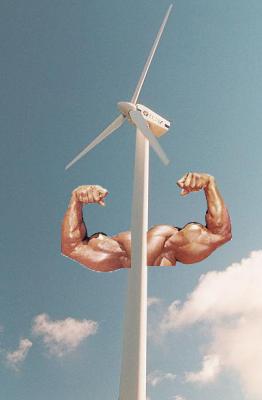 After more than doubling in 2006 to 1,468 MW, Canada’s installed wind power capacity is expected to grow nearly tenfold to 14,100 MW by 2015, according to a new study by Emerging Energy Research (EER).
After more than doubling in 2006 to 1,468 MW, Canada’s installed wind power capacity is expected to grow nearly tenfold to 14,100 MW by 2015, according to a new study by Emerging Energy Research (EER).
“In the past two years the Canadian wind power market has evolved from relative obscurity — an occasional diversion for wind turbine vendors struggling for market share in the US — to become one of the world’s largest and fastest growing wind power markets,” says EER senior analyst Joshua Magee.
This follows on the heals of other big wind numbers from other countries around the world. Energy industry meet wind power, wind power this is the energy industry. If anyone had any doubts wind energy has arrived.
With C$18 billion in wind power investment forecasted between 2007 and 2015, Canada is expected to rank among the world’s five or six largest wind power markets over the forecast period, with annual MW development over the coming decade set to average 1,400 MW, according to EER’s study Canada Wind Power Markets and Strategies 2007-2015.
Driven largely by provincial utility RFPs, Canada added 784 MW in new installed wind power capacity in 2006, more than double the country’s cumulative installed capacity of 684 MW through the end of 2005. Canada will contribute at least a quarter of North America’s yearly growth through 2015, and 5% of total annual global growth. Quebec and Ontario will account for approximately 60 percent of the total market through the forecast period, with strong growth in British Columbia expected in later years, according to EER’s study.
“Provincial utility demand for wind power in Canada since 2004 has changed the game,” says Magee. “Long-term goals for greater use of renewable energy, across nearly all of Canada’s provinces, has provided the necessary transparency for investment, with strong market fundamentals based on Canada’s growing concern about its greenhouse gas emissions and energy security policy.”
Rapid Growth Spurs Intense Competition
Canada’s scaling wind power market is attracting the attention of most global wind players as well as the major Canadian energy companies. Meanwhile, a growing cast of emerging wind IPPs in Canada have been leading the frenzied development activity, but the larger new entrants are expected to drive consolidation through acquisitions and partnerships, leaving far less breathing room for smaller, independent developers, according to EER’s study.
“The entrance of major Canadian energy companies such as Brookfield Power, TransCanada and ENMAX has placed increasing pressure on Canada’s emerging wind IPPs to mature quickly or risk losing market relevance,” says Magee. “These companies have been able to leverage their massive financial resources, existing energy experience, and business relationships across provinces to grab a significant portion of recent provincial RFP activity.”
Emerging wind-based IPPs and developers in Canada have had to quickly reassess their competitive advantages and adapt to a rapidly consolidating market. Canadian wind IPPs such as Canadian Hydro Developers, SkyPower, Ventus Energy, and Gale Force (now Airtricity) have adopted aggressive national project development strategies targeting several provincial RFP tenders at once.
On the supply side, turbine availability from key vendors is largely being coordinated within the context of the larger North American wind market, with most vendors anchoring their North American manufacturing facilities in the US and relaying heavily on transportation strategies to supply Canada with turbines, according to EER’s study. “Given the lack of domestic manufacturing capacity that can be expected in the Canadian market outside of Quebec, turbine vendor mastery of transportation logistics from their new US manufacturing facilities to Canada’s provinces will be crucial for successful delivery,” says Magee.
Wind Power to Play Increasing Role in Canada’s Energy Mix Over Next Decade
Moving forward, longer-term growth opportunities for wind power in Canada will be heavily dependent on the resolution of issues related to higher grid penetration levels; transmission infrastructure expansion; and Canada’s commitment to mitigate its greenhouse gas emissions, according to EER.
“If Canada remains committed to making significant reductions in its greenhouse gas emissions levels, necessary market changes in transmission and grid penetration policy should follow suit to increase wind’s share of the country’s energy mix,” says Magee. “Barring increased competition from other low-emissions energy sources, or a lack of political will to tackle effective climate change policy, the Canadian wind market should likely remain one of the top ten markets in the world over the next decade.”
Wind power’s contribution to Canadian electricity supply is poised to grow significantly over the coming decade, according to EER. While wind power accounted for only 0.7% of Canada’s energy generation mix by the end of 2006, the renewable fuel source’s contribution to Canadian electricity supply is poised to grow significantly over the coming decade, approaching an average of 5.5% across all provinces by 2015.
2 thoughts on “Canadian Wind Power Doubled In 2006 (Eh!)”
Comments are closed.